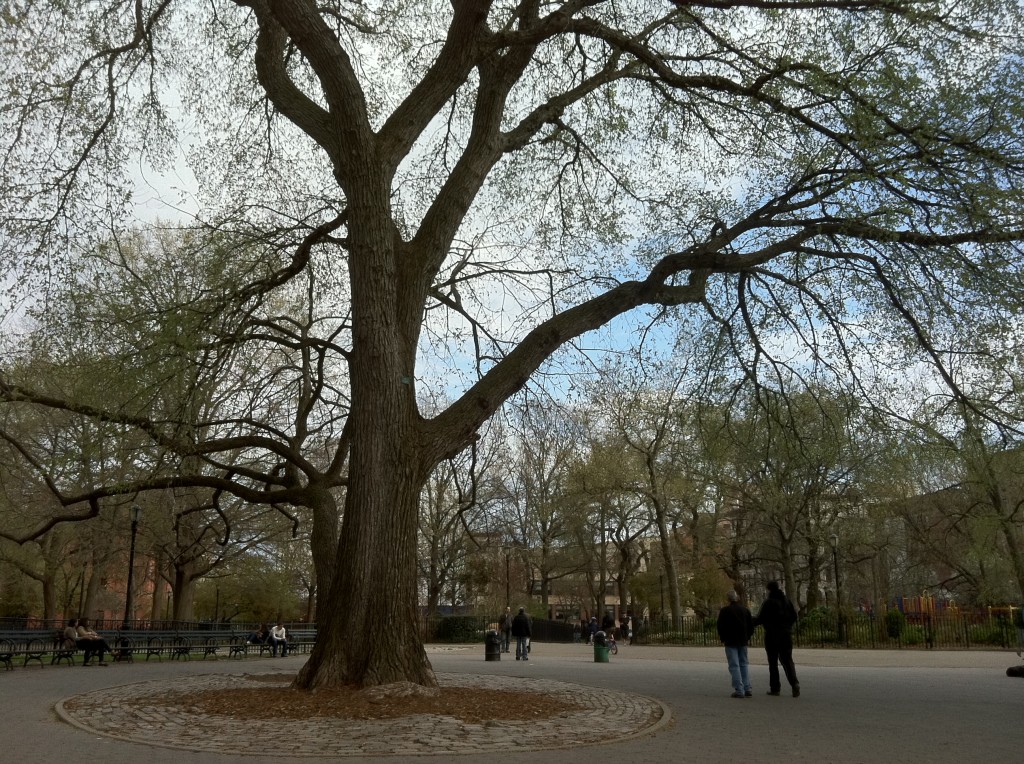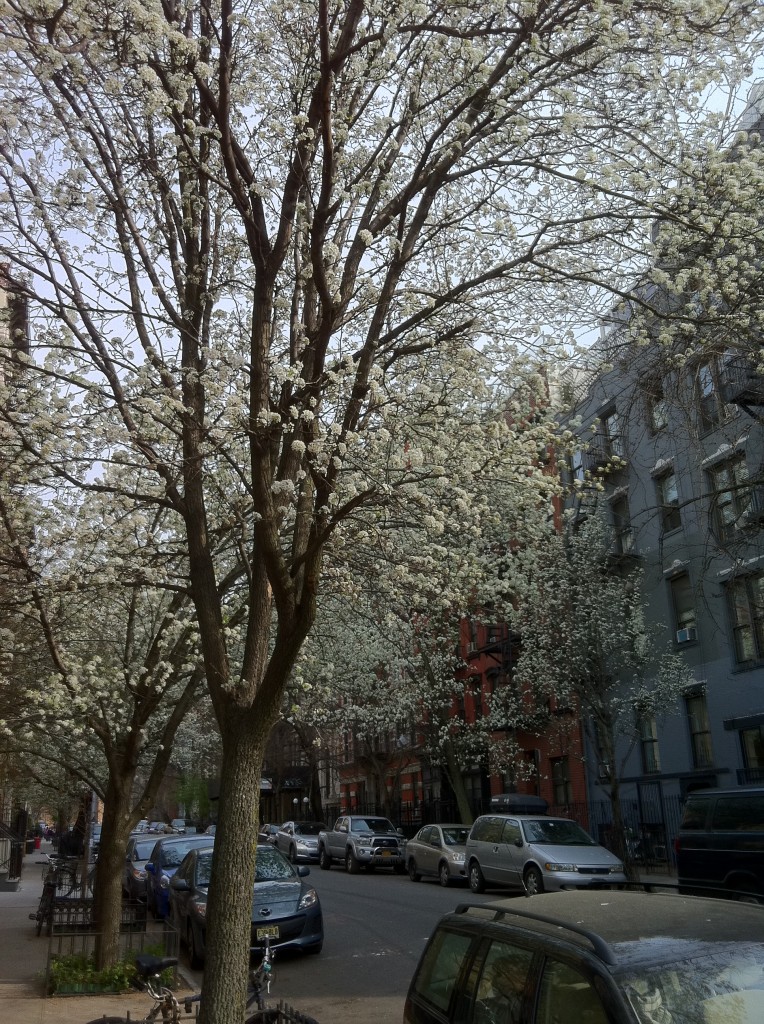The hot breath of a globally-warmed, East Coast spring brings with it many surprises. A friend of mine, a young woman, writes to me from the surreal mid March heat of Montreal, the doors and windows of her apartment all open.
‘Is it you who once spoke of the new phenomenon of grieving natural landscapes? How about grieving a Season? Winter is a part of me. A genetic part I must say too!
Culturally, winter is at the center of so much life around here. So many memories about Winter. So long Winters. Skating on the river near my parents house when I was a kid… haven’t skated there since 1998…why? Because the ice hasn’t been thick enough to be safe to skate. Or there was just plain no ice at all. What about the ice fishing villages? What about hockey games outside? What about maple syrup…the sugar season has lost nearly a month in the past 10 years! This year it was a little more than 2 weeks. Spring won, Winter was too tired to fight back.’
Here in Manhattan, the leaves and flowers have been unfurling far, far ahead of schedule. The daffodils, usually in their prime by mid March have already come and gone in nearby Tompkins Square Park – a full month earlier than is usual. It didn’t take long for my sinuses to react to the the pollen billowing in from the park’s stately American Elm trees (Ulmus americana). These venerable giants, planted by the great Frederick Law Olmstead, still flourish in the city’s metropolitan parks long after their rural brethren have succumbed to the 20th century plague of Dutch Elm disease. On the island of Manhattan, the elms are protected by encircling rivers and a miles wide cordon sanitaire of buildings and pavement that prevents the elm bark beetle, which spreads the disease, from infecting them. It’s delightful to me that all those crushing tires and stomping feet are actually aiding conservation.
As soon as the elm pollen fades, the cloying pong of Callery Pear (Pyrus calleryana) starts wafting through the East Village’s streets, the skeletal branches erupting into billowing, white flower clouds seemingly overnight, pushed into bloom by the strangely overheated breezes. Callery Pear is commonly known as the ‘spunk tree’ in these parts and the semen-like scent is strongest when the pollen starts going rancid after a bit of rain. The odor along St Mark’s place was particularly pungent this year, adding a whole other dimension to what some would say was an already rather skanky stretch of street. Once the trees stink themselves out, they become quite pleasant, bearing tiny Asian pears, from which my friend Marina Zurkow concocted a delicious alcoholic drink, after we foraged for the fruits on the shores of Brooklyn, last November.
A close second in the ejaculatory odor department is the Ghetto Palm, (Ailanthus altissima), which is found throughout the city’s waste places and terraines vagues. Thankfully it doesn’t flower till a fair bit later in the season!
How concerned should we be when the spring arrives so suddenly, so many weeks ahead of schedule? For someone like me, who hates extreme cold, this year’s eastern ‘non-winter’ should have seemed like a gift from the gods – a welcome break from the tedium of snow shoveling and galoshes. There have always been periods of aberrant weather – so why worry now?
The big picture on climate change is indeed concerning. Weather all over the planet has become increasingly extreme and records are being shattered left, right and center. The common denominator to all this chaos is global warming and it seems clear we are at the beginning of an epic shift. A recent study published in the New Scientist predicted an average 3 degrees C rise in global temperatures by 2050 – a scenario far worse than even the direst projections of a few years ago.
In addition to the ecological and economic effects, I wonder what will be the psychological outcomes of such aberrant weather? A certain predictability to the seasons seems necessary for our sense of well-being and if we can’t take some consistency for granted anymore, would it be any surprise if some of us go a little nuts?
Though we might be ‘grieving a season’ now, what will it be like when we forget completely what was once considered ‘normal’ and settle into a state of climate amnesia?
On a recent visit to suburban Toronto, I reminisced with my elderly parents over photos taken during my childhood. Forty years ago, we skated every winter on the ice of the nearby river. It was always thick enough to support the weight of snow clearing tractors and kiosks selling hot chocolate. Such reliably cold conditions seem almost inconceivable in that region now, a climate reality resigned to a distant past. An entire generation has grown up there since with no experience of the joys and tribulations of a reliably frigid winter. Perhaps the climate will someday settle into a newer, hotter ‘normal,’ but in the meantime it seems we’ll have to endure the instability of the current ‘abnormal,’ with plenty of unanticipated weirdness to come.




